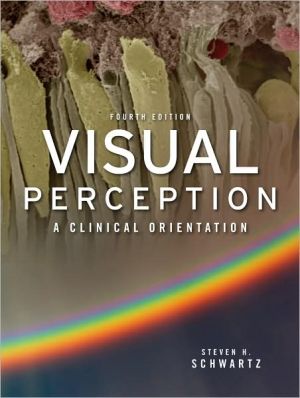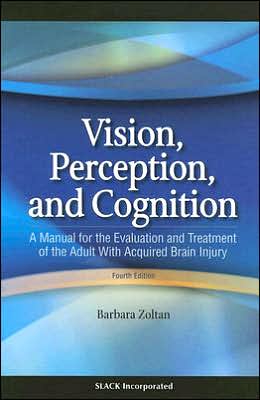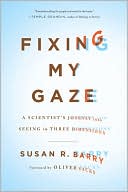Visual Perception: A Clinical Orientation, Fourth Edition
The text that bridges the gap between basic visual science and clinical application – now in full color\ Includes 3 complete practice exams!\ A Doody's Core Title for 2011!\ This comprehensive text on visual science is unique in that it highlights the fundamental aspects of monocular visual perception that are necessary to successful clinical practice. Recognized for its engaging, enjoyable style and ability to explain difficult topics in simple, easy-to-understand terms, Visual Perception...
Search in google:
The text that bridges the gap between basic visual science and clinical application – now in full colorIncludes 3 complete practice exams!This comprehensive text on visual science is unique in that it highlights the fundamental aspects of monocular visual perception that are necessary to successful clinical practice. Recognized for its engaging, enjoyable style and ability to explain difficult topics in simple, easy-to-understand terms, Visual Perception goes well beyond the basics, including information from anatomy to perception.Covering a broad range of clinically-relevant topics, including color vision and its defects, spatial vision, temporal aspects of vision, psychophysics, physiology, and development and aging, the Fourth Edition of Visual Perception has been updated to include full-color figures and many new clinical images. Each chapter has been revised to keep up with the latest advances in the basic sciences, and throughout the text the linkage between basic psychophysics and clinical practice has been strengthened.Features New full-color presentation with 250 illustrations, including color vision tests and fundus photographs 3 practice exams (more than 200 multiple-choice questions) Self-assessment questions at the end of each chapter Current references from leaders in each subfieldEnjoyable to Read AND Comprehensive!Experimental Approaches,Introductory Concepts,The Duplex Retina,Photometry,Color Vision,Anomalies of Color Vision,Spatial Vision,Temporal Aspects of Vision,Motion Perception,Depth Perception,Psychophysical Methodology,Functional Retinal Physiology,Parallel Processing,Striate Cortex,Information Streams and Extrastriate Processing,Gross Electrical Potentials,Development and Maturation of Vision,Practice Exams,Answers to Self-Assessment Questions,Answers to Practice Exams,References
Visual Perception: A Clinical Orientation1. Experimental Approaches2. Introductory Concepts3. The Duplex Retina4. Photometry5. Color Vision6. Anomalies of Color Vision7. Spatial Vision8. Temporal Aspects of Vision9. Motion Perception10. Depth Perception11. Psychophysical Methodology12. Functional Retinal Physiology13. Parallel Processing14. Striate Cortex15. Information Streams and Extrastriate Processing16. Gross Electrical Potentials17. Development and Maturation of VisionAnswers to Self-Assessment QuestionsPractice Exams 1, 2, 3Answers to Practice ExamsReferencesSteven H. Schwartz, O.D., Ph.D. studied optics at the School of Optometry, University of California, Berkeley and has taught optics in both the basic curriculum and special Board review courses. He has co-chaired the Examination Development Commission, National Board of Examiners in Optometry. Dr. Schwartz presently teaches at the SUNY State College of Optometry.
\ From The CriticsReviewer: Brian Marshall, O.D.(Marshall Family Eye Care)\ Description: This is the fourth edition of the classic book on the science of vision that describes the complex processes involved in how we visualize the world around us. The third edition was published in 2004. \ Purpose: The purpose is to provide a comprehensive account of the major elements of the human visual system by combining basic vision science and clinical applications.\ Audience: Although written for optometry students, the book is full of insights for psychology students and even eyecare practitioners. The author is well known and an expert in the field of visual perception.\ Features: After a brief primer on ocular anatomy and physiology, the main focus of this book is on the science of vision. Chapters cover the theories and concepts of color vision, spatial and temporal vision aspects, and subsequent clinical ramifications. Variations in light perception both over space and motion are described in great detail. Throughout the book, "Clinical Highlights" tie together vision science concepts with clinical situations that the eyecare professional will encounter. This edition has been thoroughly updated to include new research and advances in the understanding of vision science and, for the first time, all the figures are in color. As in the previous edition, each chapter concludes with a summary followed by a self-assessment question and answer section. \ Assessment: There are many books on visual perception, so why is this one the most popular and a permanent fixture in the education of all optometry students? It is simple. This book explains very difficult concepts in an easy to understand manner and it is painstakingly updated to include all of the most recent advances and research. It does a superb job of incorporating basic science with clinical applications. Without exception, all optometry students and practicing eyecare professionals should read this book.\ \







